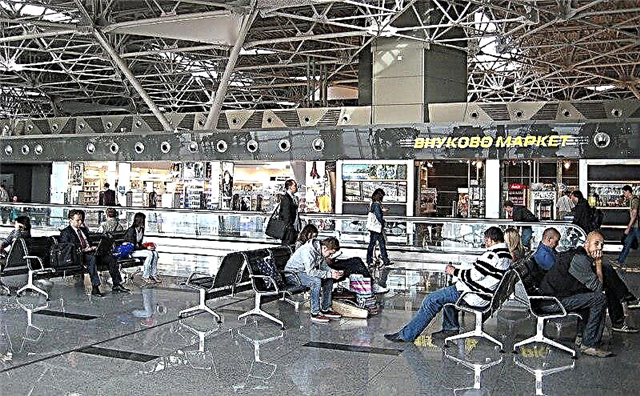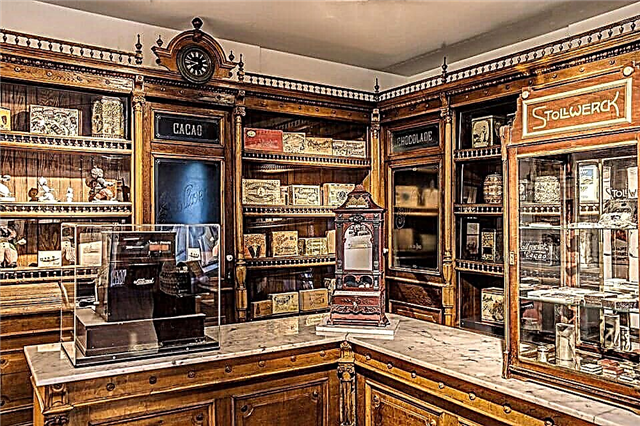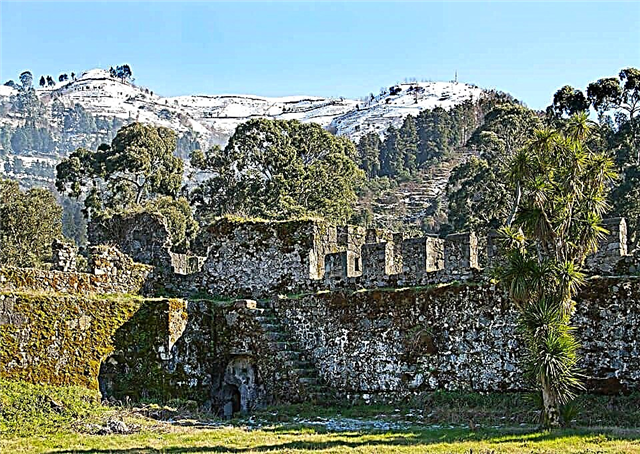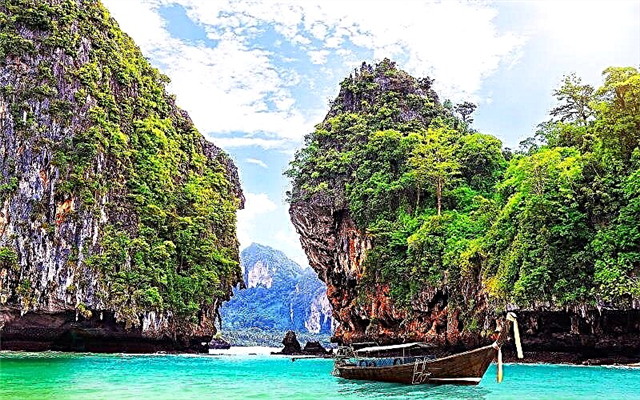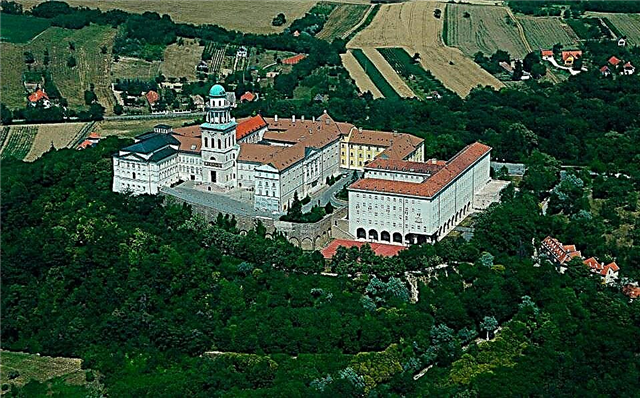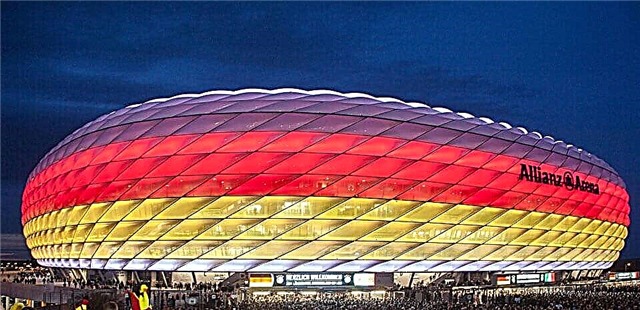Munich, Germany, has given the world not only amazing beer and white sausages. The city, whose history began in the 8th century, is home to many monuments: from ancient basilicas to modern museums. To get acquainted with all the sights of the capital of Bavaria, you will have to spend more than one week. For those who are limited in time, we have prepared a list of the most interesting things to see in Munich in 2 days. And if the proposed program seems too busy to you, make up your route, including a visit to the famous places of the third largest metropolis in Germany. We will talk about them today.
First day
To make your acquaintance with the city the most pleasant memories, we suggest spending the first day walking around the center. Here you will not only visit the main historical sites, but also feel the traditional Bavarian comfort for which the "secret capital" of Germany is famous.
Marienplatz square

The heart of the Bavarian city beats on the legendary square, which is the ideal starting point for sightseeing tours. Here, in the historic center, you will find famous sights: the medieval Fish Fountain, the solemn Column of Mary, the Toy Museum, the Old and New Town Halls.
The history of Marienplatz began in 1158. At the intersection of the main trade routes, a spontaneous market arose - the most visited place in the city. People came here to buy grain, fish and watch knightly tournaments. The square got its modern name in 1638, when the Mariinsky Column was installed in its center - a symbol of the city's liberation from the Swedish invaders.
Always lively and bustling, Marienplatz has plenty of fun throughout the year. It hosts city events and festivals, and lights up the main Christmas tree in December. People come here to admire the work of street artists, shop at the Galeria Kaufhof and Ludwig Beck shopping centers, or simply watch Munich life from a table in one of the cafes.
New Town Hall

The neo-Gothic walls of the New Town Hall are the first things that attract the attention of visitors to Marienplatz. The grandiose construction of brick and stone, erected in 1908, is a complex of buildings grouped around 6 courtyards. The magnificent 100-meter facade is lavishly decorated with ornaments and figures of saints, historical figures and fairy-tale characters.
Today, the Town Hall serves as a meeting place for the city council and the headquarters of the burgomaster. Tourists can visit only the 85-meter tower, to the top of which can be reached by elevator, and the Ratskeller beer restaurant located in the basement.
A peek at the Marienplatz at 11:00, 12:00 (and 17:00 from March to October) will witness a fascinating 15-minute action unfolding on the bay window of the main tower. To the ringing of 43 bells, the windows of a two-tier balcony are thrown open, and 32 figures, cast in human height, appear. Copper "actors" act out historical scenes from Bavarian life, such as knightly tournaments and festive dances of potters celebrating the liberation of the plague in 1517.
Old Town Hall

From the east, Marienplatz is closed by the Old Town Hall, decorated with fabulous pointed turrets. The history of the white-stone building dates back to 1310, when a 56-meter tower was erected on the site of the Talburg gate of the city fortress wall. 84 years later, a building for city council meetings appeared nearby. In 1460, the unexpected happened - the town hall was severely damaged by a fire that broke out after a lightning strike. The talented architect Jörg von Halsbach, who donated the Frauenkirche church to Munich, took over the restoration.
Ten years later, a new Gothic building appeared in the city center. A prison was located in its basement, the first floor was given to the Bread House, and the second was occupied by the dance and festive halls. Thunder struck in 1944. Allied bombardments severely damaged the structure, destroying the spire and shattering the walls. The reconstruction of the building was completed in 1977.
Toy Museum

Today, in the renovated halls of the Old Town Hall, the Toy Museum is showing its fascinating collection. Its exhibits take visitors into the world of teddy bears, porcelain dolls and tin soldiers, whose age has crossed the 100-year mark. The oldest figurine was born in 1580. This wonderful place is due to the German-Czech director and artist Ivan Steiger.
Among the unique items collected by the renowned collector over 40 years are toys made of wood, metal, plush, paper, porcelain, glass and wax. The girls will linger for a long time at the windows with soft Teddies, toy kitchens with a full set of dishes, retro dolls and modern Barbies. And the boys will surely feel like they are in paradise among miniature railway stations, tiny trains, cars, toy soldiers and robots.
The doors are open daily from 10:00 to 17:30. Entrance fee is 4 € (adult) and 1 € (child).
St. Peter's Church

Rindermarkt 1
Petershirche, or Old Peter, as the Bavarians affectionately call the oldest functioning temple in the city, appeared in the center in the 11th century. Originally erected in Romanesque style, the building has been rebuilt twice. The building got its modern look in 1278. During the Second World War, the basilica was partially destroyed. Reconstruction continued until 2000. The austere Gothic facade is set off by the interior decoration, which is impressive with the luxury of the late Baroque. The main element of the interior is the high altar, created by Nikolaus Gottfried Stuber in 1734.
The center of the composition is occupied by the figure of Saint Peter sitting on a throne with a tiara. Traditionally, the gold jewelry leaves the head of the apostle after the death of the Pope, and is re-erected with the appearance of a successor. As in the palm of your hand, the Bavarian capital will appear before you from 56 meters - the height of the observation deck, located in the tower of the church. To climb the platform, you have to climb a steep, narrow staircase consisting of 306 steps.
Peterskirche is open daily from 10:00 to 18:00. The entrance to the temple is free. The rise to the tower is paid additionally.
Church of the Holy Spirit

Prälat-Miller-Weg 1
Opposite the Peterskirche there is another famous temple - the Church of the Holy Spirit, built in 1392 on the site of the burned down monastery hospital and the adjoining chapel. 338 years after its construction, the holy house was decorated with stucco and frescoes, and in 1885 the building acquired a neo-baroque facade. The main value of the church is its interior decoration, which combines elements of the late Baroque and medieval Gothic.
The hall with three naves is decorated with:
- Altar with the image of the Holy Mother of God (1450), formerly located in the Abbey of the Tegernsee Valley.
- A bronze tombstone for Prince Ferdinand of Bavaria.
- Crucifixion 1510 in the Kreuzkapelle chapel.
- Wall murals by Peter Jakob Horemann.
- The main altar "Descent of the Holy Spirit" painted by Ulrich Lot.
The sights of the church are available every day from 8:30 am to 7:00 pm.
Frauenkirche cathedral

Frauenplatz 12
From any point you can see a grandiose brick structure with two towers topped with dark turquoise domes. This is the legendary Frauenkirche - the main cathedral and the largest church in southern Germany. The dimensions of the temple amaze the imagination: the length of the facade is 109 m, the width is 41.5 m. The first stone in the foundation of the Gothic cathedral was laid in 1468. The construction of the Frauenkirche is steeped in legends.
One of them says that the devil, angry with the appearance of a new holy house, burst into the not yet consecrated temple and did not see any windows there. The unclean man stamped his foot with joy and disappeared. However, the devil was mistaken - he was standing in a place from which none of the existing windows could be seen.By the way, the footprint of Mephistopheles, left on the stone tiles of the ancient floor, can be seen at the main entrance.
Today the magnificent cathedral is the symbol of the capital of Bavaria and the tallest building in the city. In 2004, the local authorities decided to ban the construction of structures exceeding 99 m (the height of the Frauenkirche towers). The church is open in the summer from 7:30 to 20:30, in the winter until 20:00. Holy Mass begins at 9:00 (weekdays) and 10:00 (Sunday).
Beer Hofbräuhaus

Platzl 9
In 1589, the first court brewery opened in the capital of Bavaria, which after 308 years turned into a restaurant located two minutes walk from Marienplatz square. The Hofbräuhaus is not just your run-of-the-mill establishment. The renowned restaurant, seating 4,000 concurrently, is a kingdom of 7 spacious historic rooms and an open beer garden. It's always fun and noisy here. The voices of tourists and patrons are lost in the perky rhythms of national music, and waitresses dressed in traditional dirndl costume scurry between wooden benches and tables, carrying trays of food and huge mugs of barley nectar.
Whether it's the dark Hofbräu Dunkel or the wheat Münchner Weiße, don't forget the hearty snack. The restaurant's menu is replete with authentic Bavarian dishes: white boiled sausages, salted pretzels, baked pork knuckle and sauerkraut. The average bill is 24 €.
Beer and Oktoberfest Museum

Sterneckerstraße 2
It is no coincidence that the city is called the Beer Mecca. In the city, about which foam lovers speak with aspiration in their voices, the drink began to be brewed back in the 11th century. And in 1810, Crown Prince Ludwig I organized folk festivals, which in 86 years were destined to turn into the legendary Oktoberfest. Since then, the beer festival has been held annually from late September to early October.
Guests visiting the city at a different time can learn about the history and traditions of the holiday by visiting the Beer and Oktoberfest Museum. It is located in a house that dates back to 1327. Creaky floorboards, narrow corridors, wooden staircases, and mysterious doors closed on ancient locks speak of venerable age.
You are expected by:
- Exhibits include beer brewers, age-old barrels, corks, bottles and mugs of all shapes and sizes.
- Archival documents, posters and dummies of the obligatory attributes of Oktoberfest: pretzels, sausages and gingerbread.
- Beer tastings and brewing master classes.
- Cozy cellar restaurant.
The collection can be viewed from Tuesday to Saturday from 13:00 to 18:00. The entrance ticket costs 4 €.
Viktualienmarkt

Viktualienmarkt 3
If, along with the historical monuments of the Bavarian capital, you are interested in culinary attractions, then be sure to visit the Viktualienmarkt - the Mecca of gourmets who know a lot about good food and German cuisine. Since 1807, this market with an area of 22 thousand m2 every day (except for Sundays and holidays) has presented delicious products to buyers: cheeses, meat delicacies, game, fish, seafood, spices, pickles, herbs, vegetables, exotic fruits and aromatic baked goods. The famous bazaar is visited not only by tourists.
The gastronomic paradise is popular with the locals, and the chefs of Munich restaurants no, no, they go to the market for fresh ingredients for their culinary masterpieces. In spring, Viktualienmarkt becomes the epicenter of the grand Faschingkarnaval - a holiday dedicated to the end of cold weather and the revival of life. Traders run the festival. Dressed in outrageous costumes, they demonstrate to enthusiastic customers not only their goods, but also their ability to dance and sing well.
Azamkirche Church

Sendlinger Str. 32
In 1733, Cosmas Damian and Egid Kvirin Asam purchased a plot of land in the center and built two buildings on it: a private house and an adjacent church. Legend has it that a few years before this event, the brothers, traveling along the Danube, were caught in a storm and, if rescued, vowed to open the parish. The boulders surrounding the temple's entrance are said to represent the dangerous cliffs of the raging river.
Although the Azamkirche (the official name is the Church of St. John of Nepomuk) was created for personal use only, after the protests of local residents, the brothers made it public. The currently functioning temple amazes with the beauty of the facade decorated with stucco molding and figures of mythological characters and the luxurious baroque interior.
The interior decoration immerses the parishioners in the world of precious frescoes and elaborate decorative carvings. The ceiling painting "The Life of Saint Nepomuk" is considered one of the masterpieces of Cosmas Damian. The two-level altar is framed by four spiral columns. The glass reliquary contains particles of the relics of St. Nepomuk.
Opening hours: Monday - Thursday + Sunday - from 8:00 to 17:30, Saturday - from 12:00 to 17:30.
Munich City Museum

Sankt-Jakobs-Platz 1
Founded in 1888, the Munich City Museum introduces its guests to the history and culture of the Bavarian capital. The rich collections housed in the halls of the former armory and stables include archival documents, graphics, paintings, furniture, musical instruments, clothing, fairground rides, toys, photographic and film materials.
Among the favorites of the collection are the wooden figures of the Morisco dancers created in the 15th century by Erasmus Grasser, which can be seen at the exhibition of urban history "Typically Munich!" One of the permanent exhibitions is dedicated to the development of National Socialism between 1918 and 1945. The music section features 6 thousand instruments from all over the world. And visitors to the "Puppet Theater" can not only admire the retro exhibits, but also take part in a master class on making puppets.
Open Tuesday to Sunday from 10:00 to 18:00. The entrance ticket costs 7 € (all exhibitions) and 4 € (only permanent exhibitions). For students, disabled people and seniors the price is 3.50 €, children under 18 are admitted free of charge.
Cinema Museum

Sankt-Jakobs-Platz 1
For fans of cinematography, we advise you to visit a separate part of the Munich City Museum - the Museum dedicated to cinematography. Here you can not only watch old films and documentaries, but also attend theme nights, as well as take part in regular discussions with famous actors and directors. The exposition of the museum, created in 1963, is an archive containing about 6 thousand works of the classics of world cinema.
The employees are justly proud of the collection of German and Soviet silent films. The pearls of the unique collection are Karl Böse's Golem and Fritz Lang's Metropolis (1927), filmed in 1920. You can see the legendary paintings in the museum's cinema. The hall, which includes 165 seats, is equipped with high-quality modern technology for image and sound transmission. The films are shown with subtitles in German and English.
Residence of the Wittelsbach dynasty

Residenzstraße 1
The residence of the ruling Wittelsbach family is located a kilometer from the city museum. The history of the imposing building began in 1385 with the Neuvest castle. Over 600 years of existence, the small building has turned into a complex of eight buildings, inside which there are 130 richly decorated rooms.
Stylistically, the palace is a magnificent mixture of Renaissance, luxurious Baroque, Rococo and strict classicism. Behind the impressive façade lies the Treasury, a collection of jewels and regalia of the Wittelsbachs' power. Among the relics are the statuette of the knight of St. George, the golden cross of Queen Gisela and the legendary Heinrichskelch crystal goblet.
The halls of the palace can be viewed from 9:00 to 18:00 (from April to 20 October) and from 10:00 to 17:00 (from 21 October to March). The residence is open daily, except January 1, Fashing (celebrated a week before Lent), December 24, 25 and 31. The entrance ticket price is 7 €.
Feldherrnhalle

Residenzstraße 1
The arched structure, located at the southern end of the Odenonsplatz, enjoys a controversial reputation. Over the decades, attitudes towards the Feldherrnhalle have varied from awe to deep hatred.The stone loggia was built between 1841 and 1844 on the instructions of King Ludwig I, who wished to perpetuate the memory of the victories of the Bavarian army and the valor of its generals. The key figure of the Feldherrnhalle is a monument that embodies the might of the Bavarian military forces. To the left and to the right are the bronze statues of Prince Wrede and Count Tilly.
The company of the field marshals is made up of royal lions guarding the main staircase. In 1933, with the coming to power of the NSDAP party, the loggia turned into a symbol of Nazism. SS attributes and a guard of honor appeared near Feldherrnhalle. Buildings passing by were required to raise their hand in greeting to the Fuhrer. The disobedient faced punishment. Until 1945, most Munich residents bypassed the Odenonsplatz.
Second day
You will have to wake up early to get around the many attractions included in the second day of your stay. We advise you to start your journey by visiting famous museums. If the historical and cultural artifacts bore you, go explore the sites of the city's largest parks.
German technical museum

Museumsinsel 1
On a small island, washed by the waves of the Isar River, there is a building, a visit to which will be a revelation for all fans of technology. The founder of the museum, Oskar von Miller, said: "Here everyone can do whatever they want." The flying, floating and riding aids of the 116-year-old collection can be touched and even powered.
On six floors, 50 permanent exhibitions await you, from the telecommunications hall to the astronomical observatory. In numerous rooms, you will meet copies and originals of planes, ships, cars and space rockets. Among the usual technical devices, there are also unique objects: the first diesel engine, a fishing sailboat in 1880 or a submarine in 1906.
The relics can be viewed from 9:00 to 17:00 (daily). The ticket price for adults is 14 €, for pupils and students - 4.50 €.
Old Pinakothek

Barer Str. 27
The word "pinakothek" in Ancient Greece was used to denote the premises within the walls of which only works of painting were kept. With this in mind, the Duke of Bavaria Wilhelm IV in 1529 laid the foundation for a collection that includes paintings by famous artists of the time, such as Albrecht Altdorfer and Albrecht Durer.
Today, the two-storey building of the Old Pinakothek displays works by German, Flemish, French, Spanish and Italian masters who worked from the 15th to the 18th century. The rich collection of 700 paintings includes masterpieces of world painting: "Lamentation of Christ" by Botticelli, "Suzanne and the Elders" by Van Dyck, "Golden Age" by Cranach, "Madonna of the Carnation" by da Vinci, self-portraits by Durer and Rubens.
Opening hours:
- Wednesday - Sunday: from 10:00 to 18:00
- Tuesday: 10:00 am to 8:00 pm
The entrance fee is 7 € (full) and 5 € (reduced). On Sunday the price is reduced to 1 €.
New Pinakothek

Barer Str. 29
In the middle of the 19th century, the Bavarian king Ludwig I, known for his passion for literature and art, decided to open the first public museum in Europe, dedicated exclusively to the works of modern masters of painting and sculpture. In 1853, a collection of paintings by German Romantic artists was presented to the public: Karl Rothmann, Caspar David Friedrich, Peter von Cornelius, Max Liebermann.
After the death of the ruler of Bavaria in 1868, the gallery's collection consisted of 425 paintings. In 1915 the museum became the property of the state. Hugo von Chudi was appointed to the post of director, thanks to whom the masterpieces of French impressionists appeared in the gallery: Edouard Manet, Toulouse-Lautrec, Claude Monet and Vincent van Gogh. As of 2019, the Pinoteca Foundation has about 4.5 thousand paintings and 300 sculptural compositions.
Pinakothek of Modernity

Barer Str. 40
Opened in 2002, the Pinakothek of Modernity, whose spacious rooms are located behind a glass façade on an area of 12 thousand m2, combines the collections of four independent museums. The ground floor is occupied by expositions of the New Collection. It displays original jewelry, household items, computers, furniture, strange-looking cars and other wonders of design thought.
Climbing higher, you will get acquainted with the exhibits of the Architectural Museum and the State Graphic Collection: models and sketches of famous architects, engravings, prints and the best examples of printing. The second floor is given over to the collection of art nouveau works. The trends of minimalism, surrealism, bauhaus, cubism, pop art and expressionism are represented by the works of such masters of contemporary art as Sandbach, Kandinsky, Matisse, Delaunay, Dali and Picasso.
Opening hours:
- Tuesday - Sunday: from 10:00 to 18:00
- Thursday: from 10:00 to 20:00
The ticket costs 10 € (full) and 7 € (reduced). On Sunday the price is reduced to 1 €.
English park

More than 225 years ago, Elector Karl Theodor donated a large public garden to the townspeople. Over the decades, the green oasis has been overgrown with new territories until it turned into a grandiose park, the area of which is equal to 640 football fields. Today, about 50 thousand people become its guests every day, who want to relax among the shady alleys, play sports and sunbathe on the lawn.
The main local attraction is the Chinese Tower, erected in 1790. Originally, the 12-sided 25-meter pagoda served as a viewing platform for residents. During World War II, the wooden building burned down and was rebuilt in 1952.
In good weather, the musicians of the brass band gather around the Chinese Tower at 10 am. You can listen to bravura melodies and have a glass or two of foam in the open beer garden with 7,000 seats. The food and drinks here are delicious and the prices are pleasantly low. A serving of dark Hofbräu Schwarze Weisse costs 7.90 €, and a suitable snack - grilled sausages - 4 €.
Olympic Park

Spiridon-Louis-Ring 21
In 1966, Munich was declared the capital of the 1972 Summer Olympics. A huge green area of about 85 hectares in the north of the Bavarian capital was chosen as the venue for the event. The construction of the facilities cost DM 1.35 billion.
Today, the memories of sports are kept by:
- Olympic mountain
- multipurpose palace for 12 150 seats
- athletics stadium with 69,000 seats
- swimming pool
- cycle track
- tennis courts
The 291.28-meter Olympiaturm tower rises in the eastern part of the park. The construction of the reinforced concrete structure started in 1965 and was timed to coincide with the start of the Olympic Games. Observation platforms (open and two closed) are equipped at an altitude of 185, 189 and 192 m. For the opportunity to see the panorama (and in good weather - and the Alpine foothills) you need to pay 9 €.
Restaurant 181

Spiridon-Louis-Ring 7
Until 2009, the Olympic Tower was of interest only for those wishing to see the panorama of the city. Everything changed when the star chef Otto Koch decided to open a restaurant in the "heavenly" building. Its spacious hall, located at a height of 181 m, makes a full revolution in 53 minutes. In January 2015, the 66-year-old culinary artist left his brainchild. Despite this, Restaurant 181 has not lost the love of its guests and continues to delight with its elegant interior, first-class service and a variety of international cuisine.
During the day, the institution operates according to the A la Carte principle, while in the evening it turns into a gourmet restaurant. To appreciate the chef's skill, order lamb fillet seasoned with hollandaise sauce or vegetable tofu with mushrooms. Exclusive German and French wines will be a good accompaniment to the offered dishes. The price of a meal, flavored with a glass of a noble drink, is from 50 to 150 €.
Oceanarium Sea Life

Willi-Daume-Platz 1
Since 2006, the Olympic Park Oceanarium offers its guests to get acquainted with the underwater world of the World Ocean. Sea Life visitors embark on an exciting journey that begins at the headwaters of the Isar River and ends in the warm waters of the tropical seas.On an area of 2,200 m2, 33 pools are located, which have become home to 4,500 creatures - corals, jellyfish, octopuses, sea turtles, a dozen species of fish and 20 representatives of the superorder of sharks. The highlight of the aquarium is an underwater tunnel made of durable transparent glass.
During regular feedings, guests can take part in the distribution of freshwater fish, stingrays and turtles 'dinners'. Some harmless animals can even be touched and held in your hands. For young visitors, Sea Life employees conduct excursions, in a playful way, introducing children to the life of the inhabitants of the kingdom of Neptune.
The Oceanarium is open daily from 10:00 to 18:00. On weekends and holidays, the opening hours are extended by one hour. Ticket prices start at 13.90 €.
BMW Museum and Factory

Am Olympiapark 2
In 1973, the Austrian architect Karl Schwanzer designed an ensemble of buildings consisting of the BMW car factory, the headquarters and the museum of the famous representative of the German automotive industry. Today the complex is not only a world famous landmark, but also forms the urban landscape on the outskirts of the Olympic Park. Every day everyone can take part in a tour of the factory workshops.
During an exciting tour, you will learn how welding "multi-armed" robots function, how to connect parts of a future car, and what secrets are hidden in the process of painting cars. The 5,000 m2 exhibition space houses 125 sparkling chrome exhibits, from vintage cars from 1917 to the latest flagships. The focus is on models released in the middle of the last century, such as the BMW Isetta, BMW 2002 Ti and BMW 327. Priceless rarities are also of interest: the 1919 aircraft engine, the first M2 B15 motorcycle and racing cars.
Open Tuesday to Sunday from 10:00 to 18:00. Ticket price - 9 € (full), 6 € (reduced).
Allianz Arena Stadium

Werner-Heisenberg-Allee 25
Those who know firsthand the names Manuel Neuer, Jerome Boateng and Thomas Müller will surely find time to visit the holy of holies of FC Bayern München - the Allianz Arena. The construction in the form of a car tire, striking in its gigantic size and modern design, appeared in the north of Munich in 2005. The home arena of Bayern Munich has 75,000 seats. There is a museum adjacent to the building. Its exhibits acquaint fans of the football club with the history and trophies of their favorite team.
Tip: The Allianz Arena is best viewed in the evening, when the futuristic stadium, illuminated by white, red and blue colors, looks like a UFO landed.
The building is located in the Frettmaning area. The most convenient way to get there from the city center is by metro. The U6 train from Marienplatz towards Garching Forschungszentrum will take you to the Fröttmaning stop. The famous stadium is located 1.6 km from the station.
Nymphenburg palace

Schloß Nymphenburg 1
The first stone of the charming palace, later called Munich Versailles, was laid in 1664. The construction, which lasts 11 years, was timed to coincide with the birth of Maximilian II Emanuel, the future great Elector of Bavaria. Having matured and ascended to the throne, the ruler expanded his possessions, giving them the features of the French Baroque, which was popular in those years. Since then, the grandiose Nymphenburg began to serve as a residence in which five generations of the Wittelsbach dynasty spent their summers.
The interior decoration is made in the best traditions of the Bavarian court style. The Tapestry and Heraldic Rooms, the Chinese Lacquer Office and the Gallery of Beauties, whose walls are decorated with portraits of 36 charming residents of the 19th century, will remain in the memory of guests for a long time. In addition to the luxurious halls, you can visit the palace chapel, the Magdalenklause chapel, the porcelain factory, the carriage museum, the bathing house and the magnificent landscape park.
The palace is open daily from 9:00 to 18:00 (from 01.04 to 15.10) and from 10:00 to 16:00 (from 16.10 to 31.03). For ticket prices and timetables for temporary exhibitions, visit the official website.
Botanical Garden

Menzinger Str. 65
At the northern end of the Nymphenburg palace park, you will find another attraction - the Botanical Garden, created in 1914. Here buzzing of insects and singing of birds fill the air, frogs and toads frolic in the ponds between water lilies. In greenhouses, palm trees, ferns and yuccas turn green, and colorful butterflies flying between tropical plants remind of warm summer even in winter bad weather.
On the territory of 21 hectares, the vegetation of all continents has been recreated - from the Australian savannahs to the American prairies. In giant greenhouses, delicate orchids bloom, moisture-loving rice grows, gardenias and roses are fragrant. Numerous cacti stretch to the light from the stony soil, and in the impenetrable thickets of the "Amazonian jungle" a waterfall gurgles, around which little turtles doze.
The Botanical Garden is open every day from 9:00 to 19:00 (in winter - until dark). The park is closed on Christmas Eve and the first day of the New Year.

